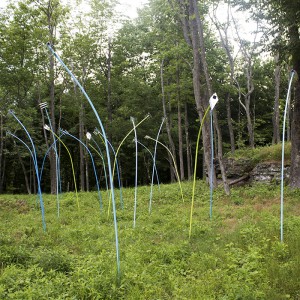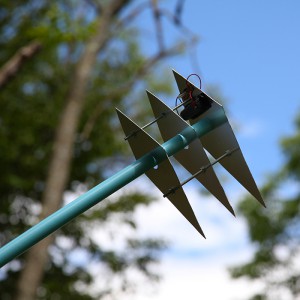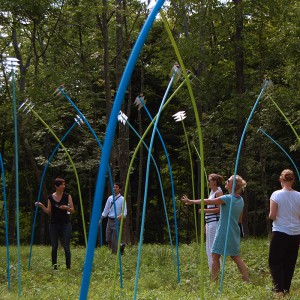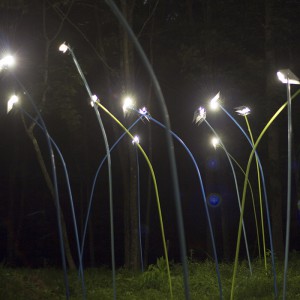Andrew Jepson-Sullivan [Electric Fescue]
Long, flexible, brightly colored tubes arc skyward, forming a thicket of yellow green and blue grass-like stems. Pointy metal nflorescences dangle at the end of each stalk, flashing and glinting in the daylight, the reflected light bouncing around the forest clearing as they move gently in response to the wind. Solar panels at the top of each stalk soak up solar energy, mimicking the process of photosynthesis. Energy flows from solar panels, through wires to a battery, where the energy is stored for later use. When the sun sets, the energy is released; in the darkness, a swarm of bright lights can be seen, inviting those who see it to investigate.
This is Electric Fescue, a new species of grass only found in one place in northeastern Pennsylvania. Like other plant species, Electric Fescue gathers energy from sunlight in a photosynthesis-like process. The installation, which takes inspiration from the prevalent, undulating fields of grass at Overlook, explores the use of renewable energy in art.
The solar panels were “harvested” from solar lawn lights. Each solar assembly contains a photovoltaic (PV) panel, a light emitting diode (LED), a rechargeable battery, and a light-sensitive switch that regulates how energy from the battery is used. When there is light, the switch directs energy gathered from the PV panel to be stored in the battery. When night falls, the switch flips and directs energy to the LED bulb. This mechanism creates a self-sustaining light display that can be maintained without human input or an external power source.
-AJS





